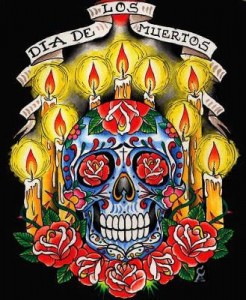
Dia De Los Muertos is a holiday that has its roots both in Christianity and in indigenous traditions. Like the Catholic All Saints Day, which is celebrated at the same time, Dia De Los Muertos is an opportunity to celebrates the lives of loved ones who have died, particularly within the last year but also dating back many years. This particular celebration is traced to Mexico, but similar observances can now be found throughout the world, not only in Spanish-speaking countries but as far away as Africa and Asia.
As you have decided to get ordained as an interfaith minister in the Universal Life Church, this holiday should be of interest to you. It presents an opportunity to focus on light in a time of darkness, on the beauty of remembrance instead of the agony of loss. Yes, there are dark elements to the celebration, as it incorporates skeletons, skulls and other representations of death, but it is a time of joy as well.
It is a day to think creatively as the bereaved build altars and leave their loved ones’ favorite foods and possessions there as tributes. Sugar skulls and marigolds are particularly popular items to leave, but each person’s offerings can be different as they uniquely represent a particular deceased friend or relative. Traditionally, November 1 specifically recognizes babies and children who have died, while adults are honored on November 2.
The day can have both somber and fun elements to it. The people paying tribute hope that the souls of the dead will draw near and intercede for them, helping their prayers reach God’s ears. In the process of remembrance, however, it is not uncommon for laughter to ring out among the altars. This is a time to recall all those silly stories and anecdotes that involve the departed loved one, so humor has a definite place in the holiday. Gifted writers might try their hands at calaveras, which are wry epitaphs that honor the dead with a funny twist.
While some traditions are fairly widespread, others vary depending on location. Those who get ordained in the Universal Life Church as an interfaith minister should investigate these customs to become familiar with them. Some traditions will resonate more deeply with certain people than others. For instance, in one part of Mexico, the holiday includes a candlelit procession of boats to an island. In another, children parade about in a manner similar to modern American trick-or-treating. Becoming aware of how the holiday is celebrated in different regions can allow for more meaningful discussions and practices of it.
Death is a subject that has troubled people throughout history, but for people of faith, it need only be seen as a time of transition, not an ending as such. Those who believe that consciousness continues after death are well equipped to see this time of remembrance as a celebration not only of the past but of the future and a time when all those whom death has separated will reunite.

